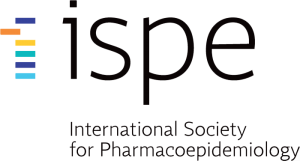Surveillance of Health Care in Asian Network (SCAN) Project: Infrastructure Development and Analysis with the Asian Pharmacoepidemiology Network
Background
To date, the initiative has included two tracks of postmarketing surveillance activities, one using a simple signal detection method and a more formal pharmacoepidemiological study to validate or confirm a signal. Currently, the administrative office for AsPEN resides in the Department of Pharmacoepidemiology, University of Tokyo. AsPEN uses a distributed network approach with a common data model similar to the one developed by the US Food and Drug Administration’s Mini-Sentinel program and the Observational Medical Outcome Partnership (OMOP), a public-private partnership funded by the Foundation for the National Institute of Health. Participating AsPEN nations include Taiwan, Japan, Korea, Australia, Sweden, and the United States. A few other Asian countries, including China, India, Singapore, and Thailand, have expressed interest in participating in future activities.
Overall Goal and Specific Aims
The overall goal of the project is to gain a better understanding of the health and heath care utilization of the population covered in each participating site database in the Asian Pharmacoepidemiology Network (AsPEN). We will conduct studies described in the specific aims and produce standardized descriptive outputs and reports based on health care interaction databases among AsPEN sites. In order to accomplish these aims efficiently and effectively, building solid infrastructure for AsPEN will be achieved by refining an existing common data model and create crosswalks among different coding systems used in each country.
Aim 1.
To estimate the prevalence and incidence (crude and adjusted Asian Pharmacoepidemiology Network AsPEN Asian Pharmacoepidemiology Network (AsPEN) is a Special Interest Group (SIG) of the International Society for Pharmacoepidemiology (ISPE) estimates) of clinically recognized disease and disease categories in the overall population and in subgroups and to describe changes over time in each AsPEN country. (Disease burden in the population)
Aim 2.
To estimate rates of health care utilization (hospitalizations, visits, diagnostic and therapeutic procedures, dispensing of prescribed medications) and calculate costs for clinically recognizable diseases and disease categories and changes over time in each AsPEN country. (Burden of diseases to the health care system)
Aim 3.
To describe major characteristics, such as age distribution, sex, comorbid conditions, and concomitant treatments, of patients with each clinically recognizable disease (incident and prevalent) or those receiving diagnostic or therapeutic interventions, such as imaging tests, procedures, and medications, in each AsPEN country. (Characteristics of populations with clinically recognizable diseases)
Aim 4.
To assess relationships between several recently emerged therapeutic interventions and diagnostic practices during 2006-2008 and the disease burden and health care utilization in each AsPEN country. (Changing disease burden and new therapies/diagnostic modalities)
Aim 5.
To assess the prevalence and incidence of clinically recognizable adverse drug events (crude and adjusted rates) for commonly used medications and their known major side effects in the overall population and subgroups and changes over time in each AsPEN country. This will provide insight into the background rate/expected rate of events for future safety research. (Understanding drug related illnesses in Asia)
Contact:
Dr Soko Setoguchi (soko.setoguchi@duke.edu), and
Edward Chia-Cheng Lai (chia-cheng.lai@duke.edu), Duke Clinical Research Institute.

